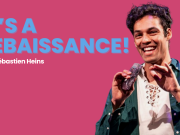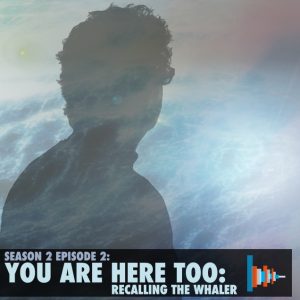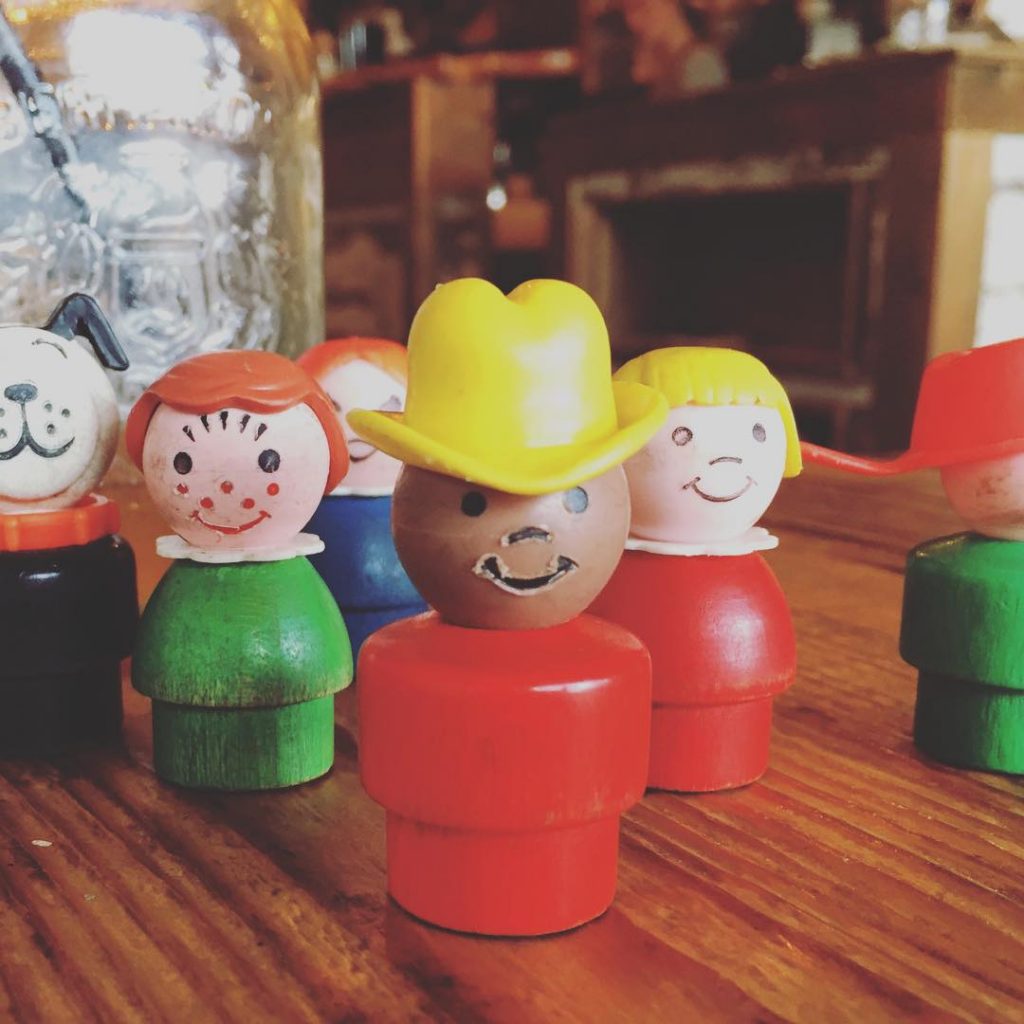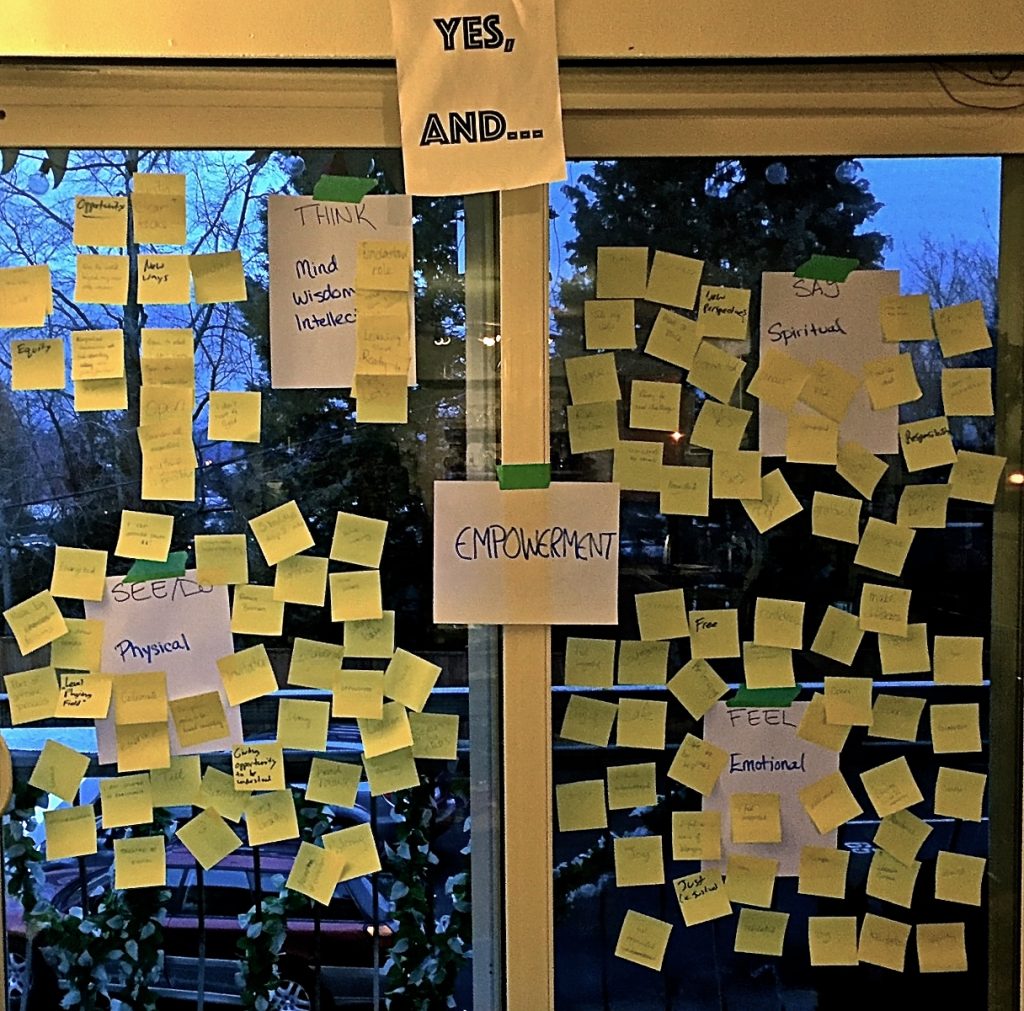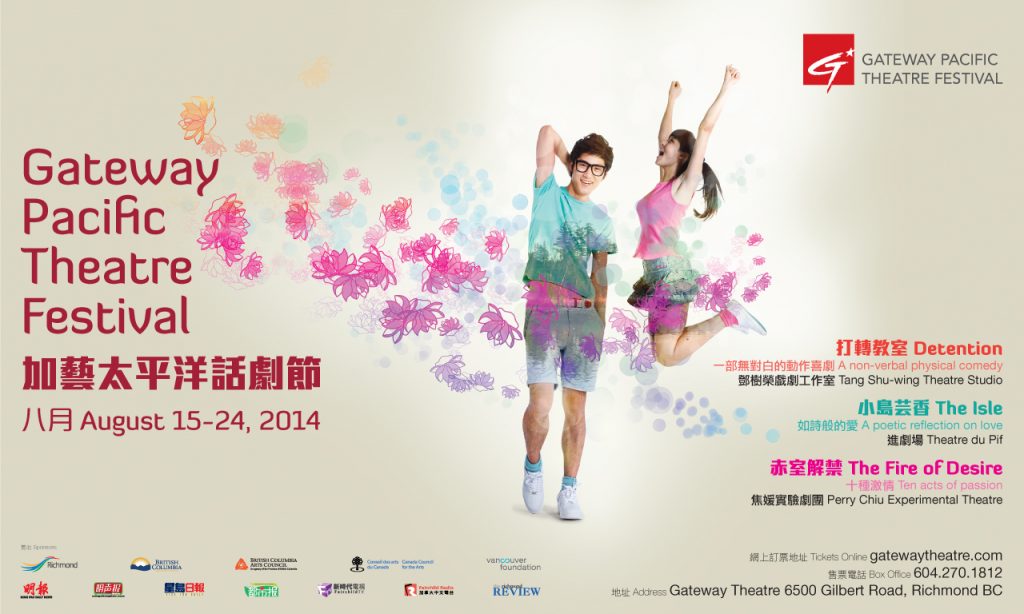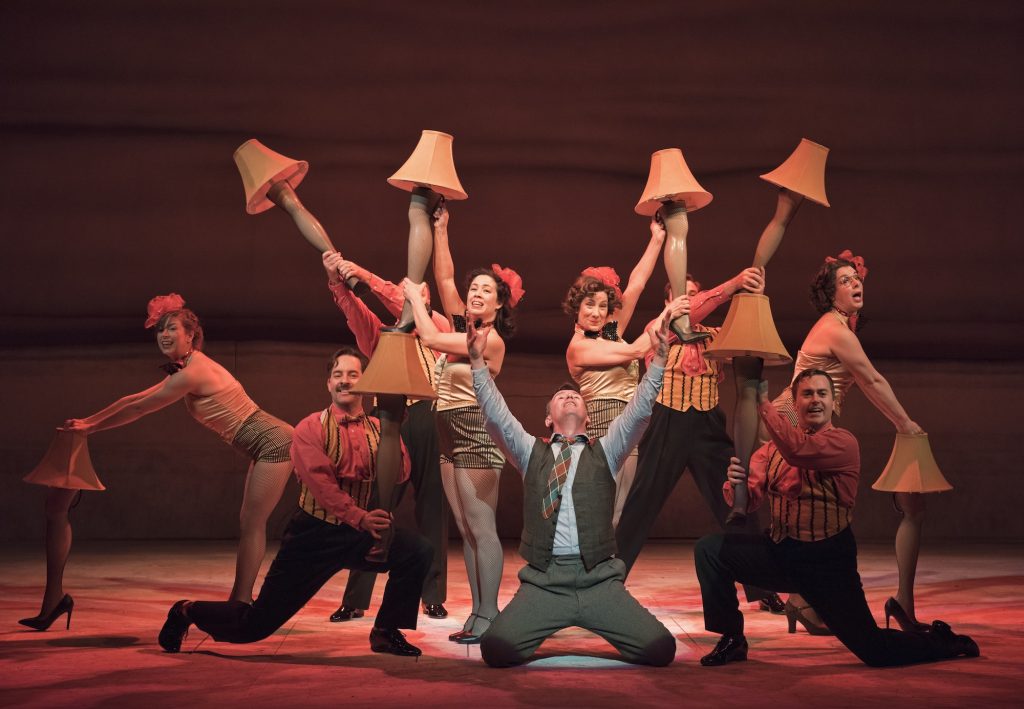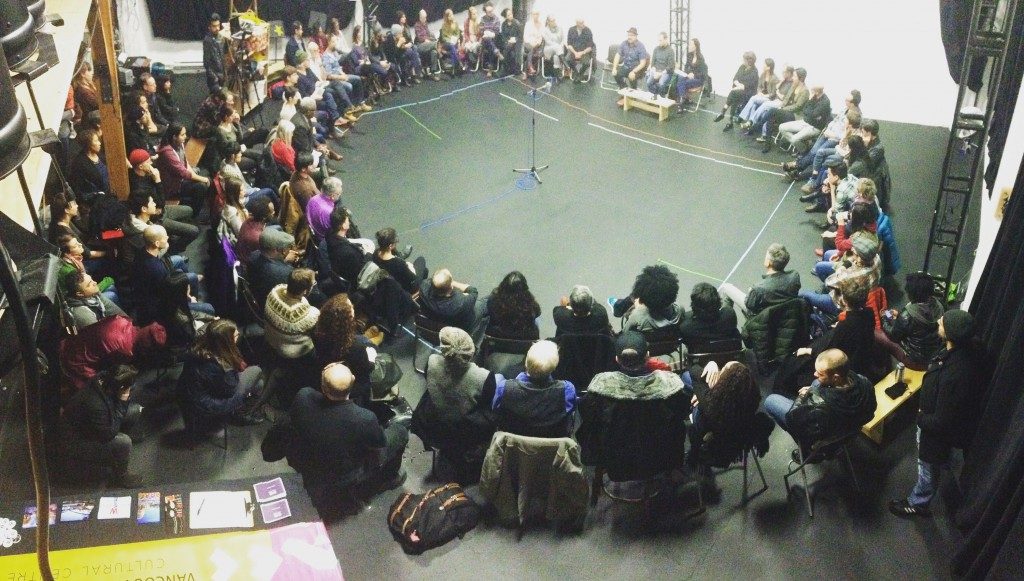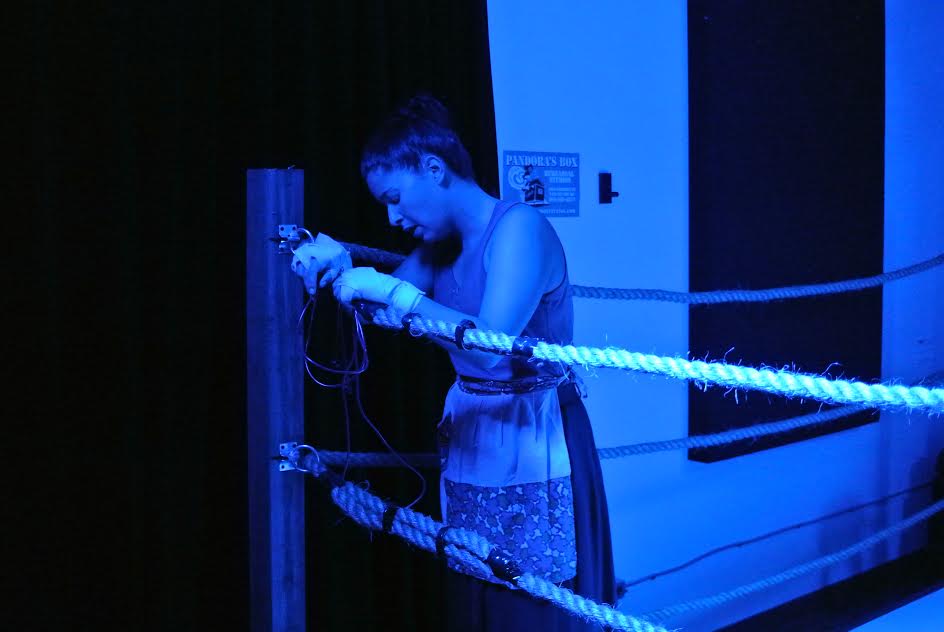Hello again! Since my last post I’ve finished Round 2 of this project: the installation version of Renderrabbits at the 2016 High Performance Rodeo. Yeehaw!
Everything went very well, I am happy to say. It was a lot of work to crank it out but the process and installation went smoothly.
(One exception: I broke my glasses on New Years’ Eve when I slipped on some ice and went face first into a street light so the last week of drawing was spent squinting through an old crap pair with my face really close to my computer screen. And I may have had a concussion??? [Probably not.] Did bang my head up though, oops.)
***
FINISHING IT UP
So December 2015 was spent drawing portraits of Michael Green, the late founder of the High Performance Rodeo and One Yellow Rabbit. Since he was a huge figure in our community before his passing I felt he needed a more significant presence in the film. I find it takes me about 2 weeks to do a sequence from start to finish, more or less. I am getting faster at this, but the clips I select are getting longer and more complicated so that cancels out the gains I make in efficiency. So if I only have enough time to do 2 more clips and tie everything together, 2 weeks per clip and another week for additional animation and post-production, what two clips do I make?
I decided to make 2 sequences of him: one from an interview he did shortly before he passed away, and one of him doing his infamous performance piece, “The Whaler.” Michael did this wild little performance as sort of a suitcase piece he could ‘whip out’ for parties, festivals, or cabarets. It was notorious. He performed it entirely nude except for a pair of yellow rubber gloves. In it Michael intermittently recites a stanza from a poem he wrote titled “The Whaler,” does a dance, then dunks his head into a bucket full of water, bellowing “I AM THE WHALER!!!” And repeat. It’s fantastic.
If you want to know more about Michael Green’s “The Whaler,” my buds and fellow SpiderWebShow contributors at the Deep Field Podcast spent the Rodeo creating an audio piece exploring the stories surrounding it. Listen to it here, it’s great! They got our mayor Naheed Nenshi on there too, which is pretty rad.
Going through the Rabbit’s archives I found a really decent video recording of a performance of it on VHS tape. This piece is infamous, like I said, but part of that means that more people have heard about “The Whaler” than have seen it. Festival goers and fans of the Rabbits will be talking about it, it always comes up whenever people start talking about Michael. Theatre is such an ephemeral thing. This notorious piece exists in our memories and our stories, but we will never see another performance. Maybe though animating a version of it from an old recording, I can make it tangible again. For a short time, anyway. Preserve an impression of Michael’s energy into a series of drawings that reanimate him in our minds when flashed at our eyeballs at 24 drawings per second. (I animate at 12fps, but stretch it out “on 2’s” so 1 drawing is shown twice. Same difference.)
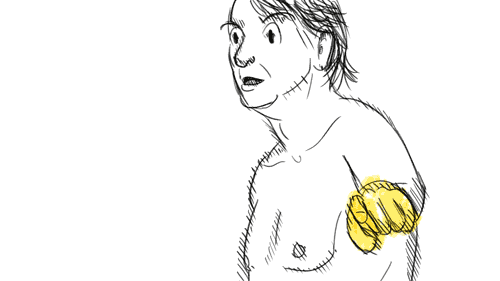
This was a long clip though – the whole piece is over 5 minutes long, which is very short for a theatre piece but a LOT to rotoscope. I found a great section near the end of the performance that was about 26 seconds long, his final dance, bucket dip, and holler. This was an older recording, but not that old. Michael was in good shape. He has a pretty sturdy physique and immense control over his movements. I know he did yoga every day. His body was his instrument. Analyzing the piece and sketching out his movements, I noticed that all his motions were very precise.
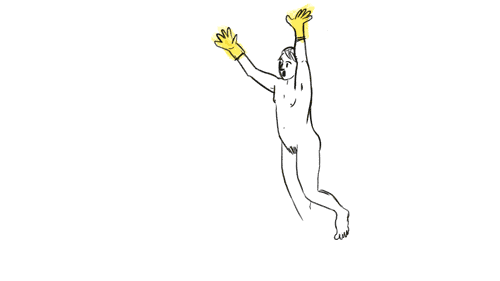
The biggest challenge of this piece was dealing with all the blurs and smears in his movements. A “smear” is when you elongate a drawing between two end points to imply a fast motion. The VHS rip I was working from had a lot of blurry images, some from fast motions – essentially smears directly encoded in the tape – and just fuzzy out-of-focus or poorly lit sections. I had to “make up” quite a lot, and sometimes when I couldn’t make out where, say, Michael’s foot was, I would either guess or just leave it out. The video blurs a lot frame by frame, so I tried to emulate that by making the lines inconsistent on those frames to match – dashed lines instead of a solid line.
For this one he whirls his arms around 3 times – each whirl I have to draw his fingers “smearing” implying fast motion for 4 circular motions. Then his hands have to come into focus. His hands blur but his body stays in focus. The way I arrange the lines, in sequence, determine our perceptions of how “fast” his arms are moving. Too many smears in sequence and it doesn’t read as moving fast.
The bucket was hard to find on the video until basically he has his head dunked into it. The original camera footage zooms and follows him around the stage a bit, and the bucket is blocked by the audience half the other time, so I just made it magically appear when it needed to instead of spending another week tracking and drawing in detail this fucking bucket. Kinda lazy, but whatever. Pick your battles when you’re doing all this yourself.
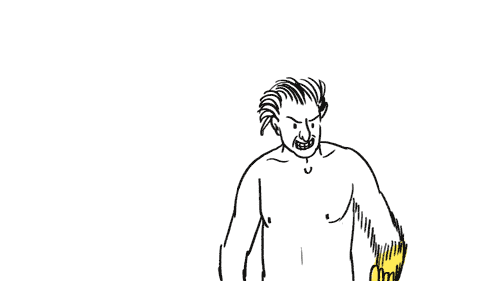
Something I am playing around with is how to portray dialogue visually, without a soundtrack. The other clip I animated before “The Whaler” clip, from his interview, had Michael talking throughout. For this one I wanted to imply that he is bellowing, and I did a lip sync to match his bellows phonetically in time. I’m not 100% on this yet. It’s effective but I think it can be refined.
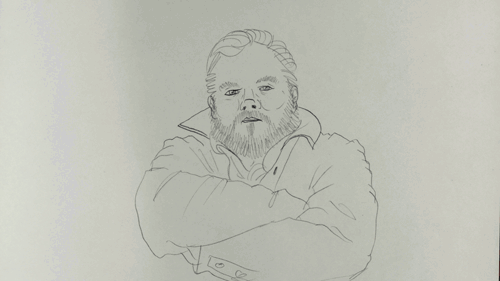
Finally, the transitions between everything! Tie it all together! I decided against looping the portraits individually. Instead each animation segment transitions to another one, and it’s the whole film in installation that loops. I had a technical problem: the portraits of Denise, Andy and Blake were drawn on paper, and the ones of Rico and Michael were done digitally. I didn’t want (and wasn’t really set up) to do more paper drawings to finish up, so I faked it in photoshop. You can kind of notice the difference between them – the pencil drawings were done in light pencil, and the digital pencil is heavier.
I wanted to turn the Rabbits into, well, rabbits. It’s something I had been thinking about for a while but I hadn’t had a chance to do it yet. So the transitions to get from one paper animation to another was to have each Rabbit’s head morph into a rabbit that looked like them. White-tailed jackrabbits, in particular. They are the kind of rabbit we have running around in the backyards and parks in Calgary. I see them at fortuitous times. Every time I start working on this project some of these jackrabbits start appearing everywhere I go. I had one big guy living in my backyard for a while. These wild, agile, and fast rabbits have thrived in the heart of our city. Seemed appropriate for these Rabbits. Not a flop-eared among them.
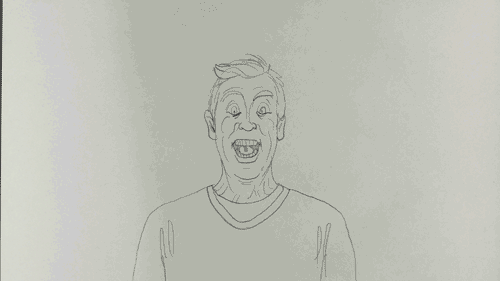
To be honest, these transitions were super fun to make. I didn’t have a lot of time to make them elaborate, but after tracing for so long it was nice to have to make it up myself. Denise morphs into Andy, Andy into Blake, Blake turns into a rabbit and gets smeared off screen, Rico smears on screen, then off again, and Michael appears from nowhere.
So I finished it up, with some time to spare, enough to even (gasp) sleep the night before putting it up! Burned it onto a looping BluRay, grabbed a player from Quickdraw Animation, and went down to the Laycraft Lounge at Arts Commons to install the finished piece!
****
THE INSTALLATION

The piece played on a TV hung on the wall, on loop, every night from January 07 – 30 2016 in the festival bar. It was hung between two Chris Cran pieces, which is super duper cool. The bar is a high-traffic area most nights, so I didn’t want to hang any drawings because the frames could get broken. See how high everything is hung, like above shoulder level? I included the credits in the piece for 6 seconds at the start, so I decided to not make a plaque.
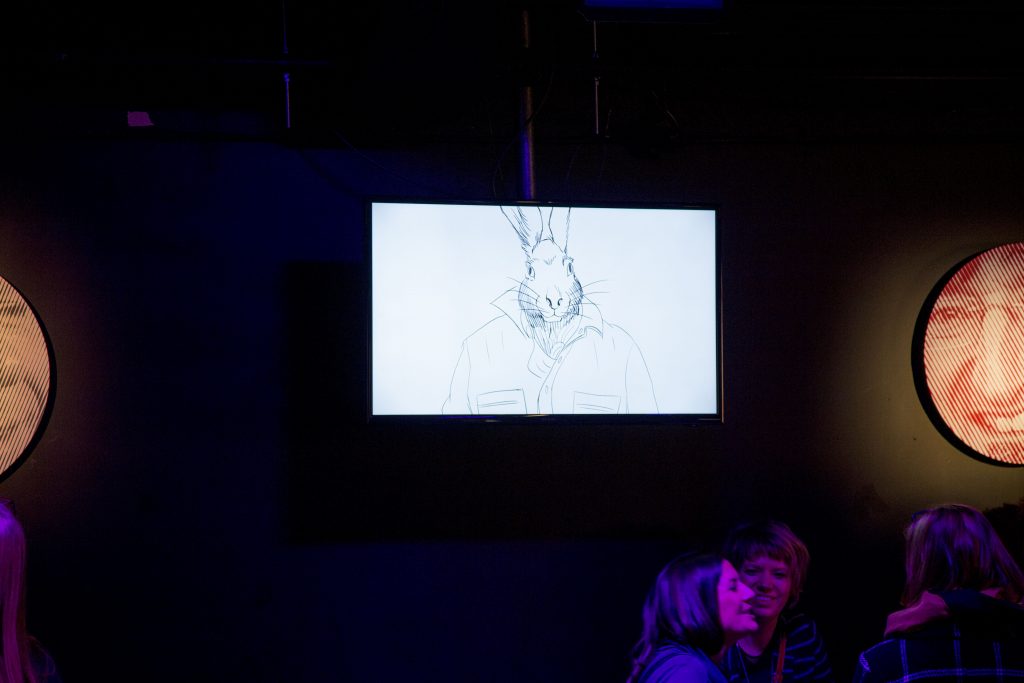
ProTip: never use DVDs with an HDTV for installation work. DVDs are 720p resolution at most, and it will look all pixelly and bad if you put it on a 1080p screen. I work at 1920×1080 at a minimum. In 5 years we are gonna have 5k displays as a standard. DVDs are dead. I want it to look like how I drew it, not down-sampled or re-rendered to fit onto a low-res DVD. I wasn’t able to play the looping .mov file off a USB or media player (my preferred option), so I burned a BluRay, set it up so all the bar techs had to do was turn on the player and it would auto-play and cleanly loop forever. It can be a little bit of a pain to burn a BluRay, but the resolution and clarity is worth it. Fortunately Quickdraw has the capacities to do that.
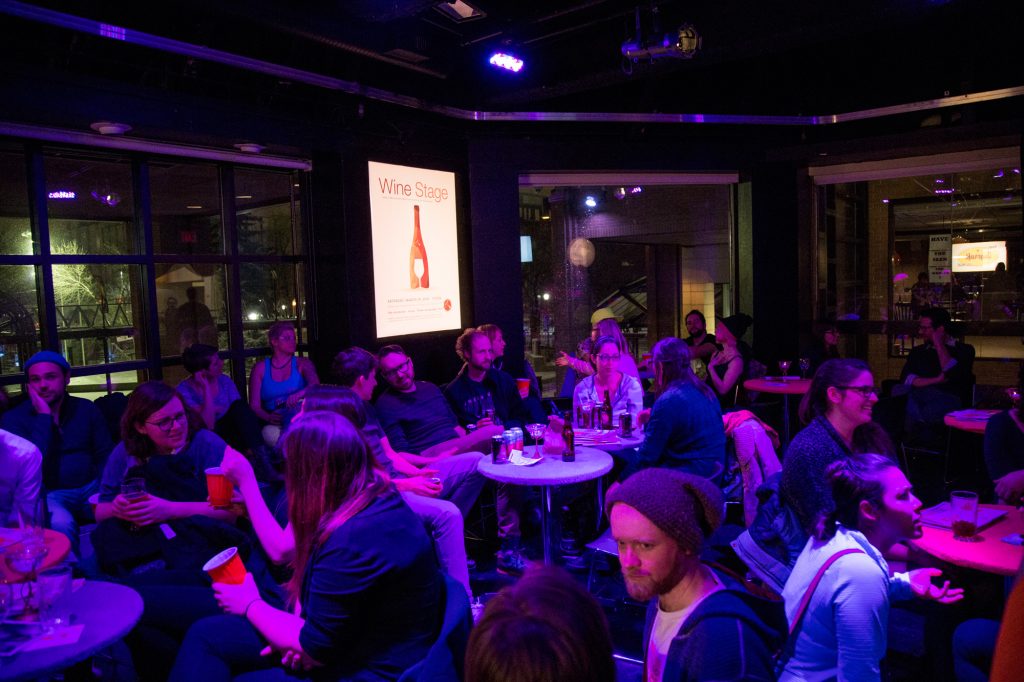
The bar can get pretty busy!
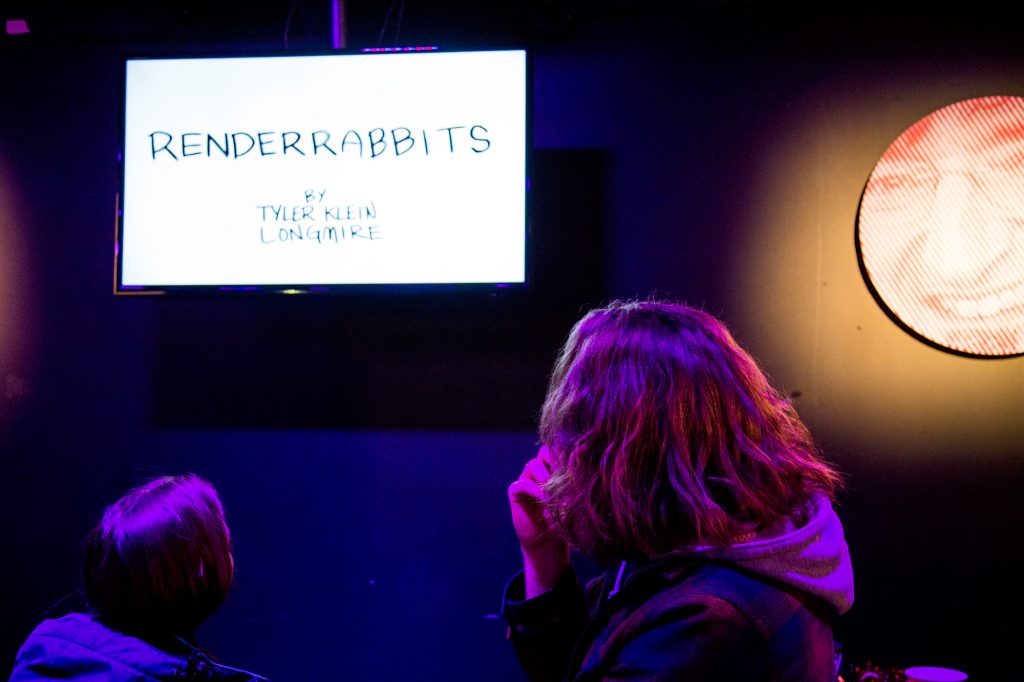
People did check it out. It’s a casual thing, an installation not a screening. It’s about 1 minute and 40 seconds long. People can talk to their friends and glance at it from time to time, or sit and watch it all in one go with no commitment. It was fun to sneak into the bar after a show and watch people watching it. As my face isn’t in the piece, no one really knew who I was (other than my friends).
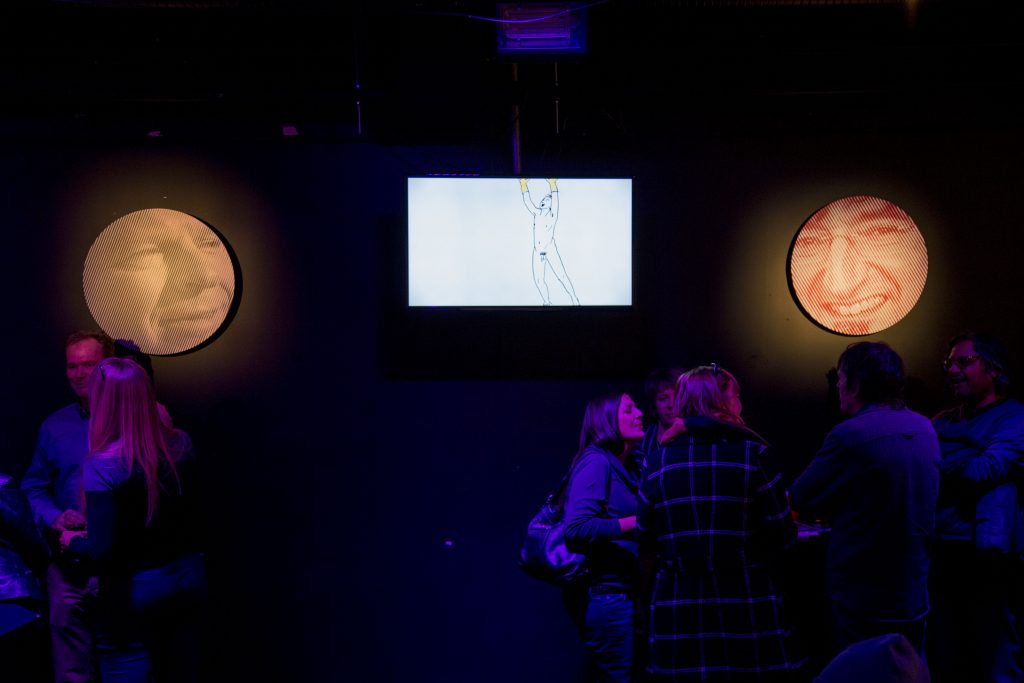
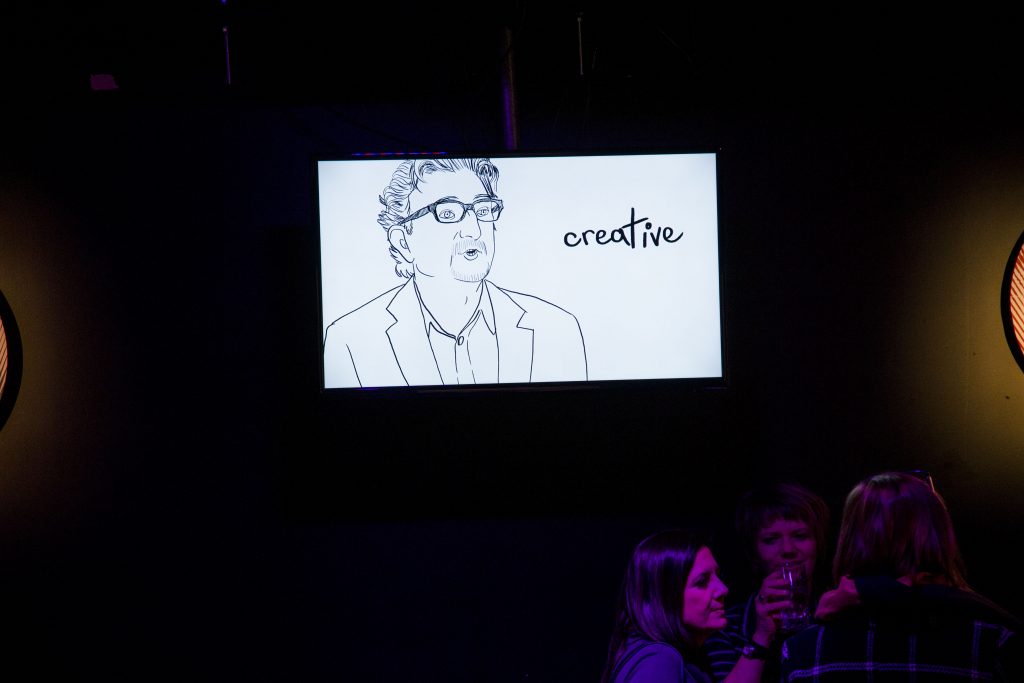
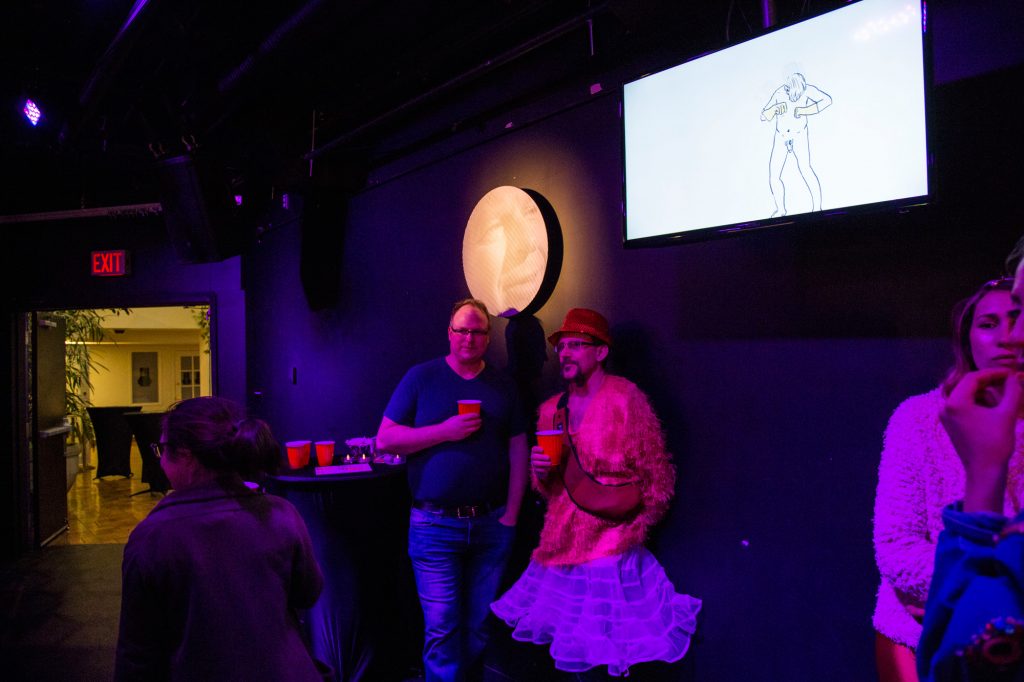
The Rodeo had a David Bowie tribute dance party the night I came by with a camera to document the installation. Also that night there was a piece called “Dance Aerobics” happening where the audience had to come in outrageous costume and movement gear. Between the Bowie party and the Aerobics crowd there was quite a lot of people at the bar in colourful clothes that night. Made for some great pictures!
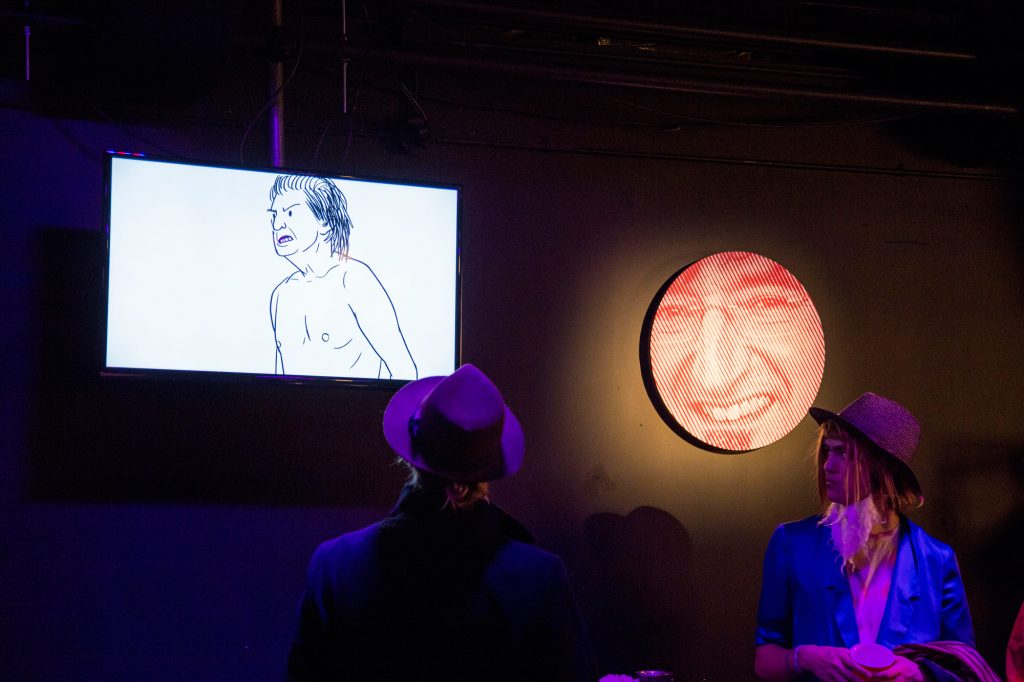
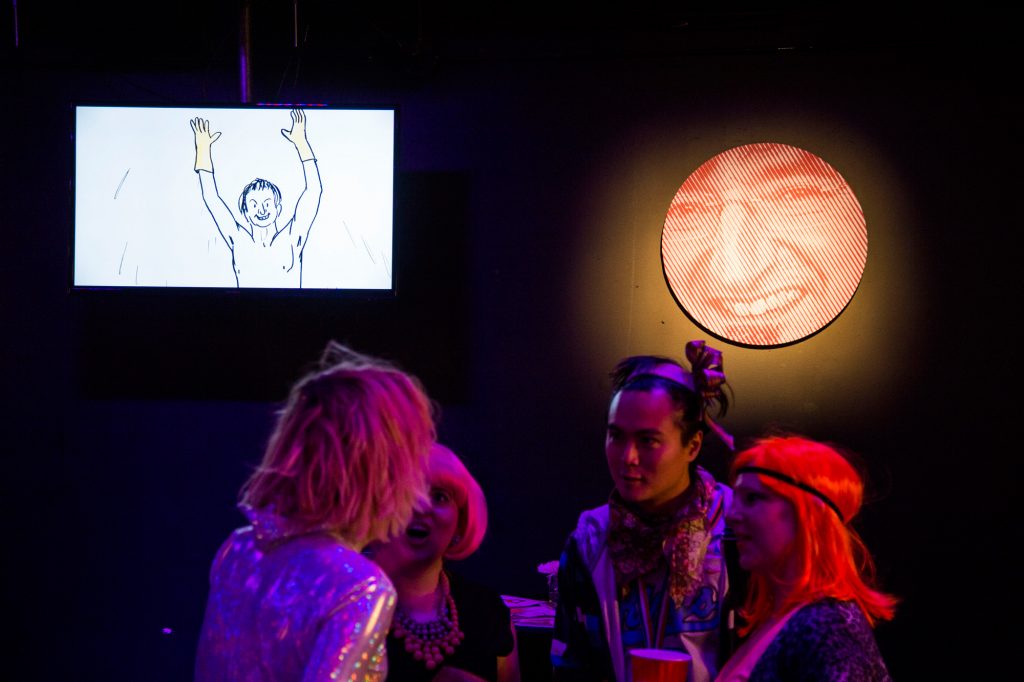
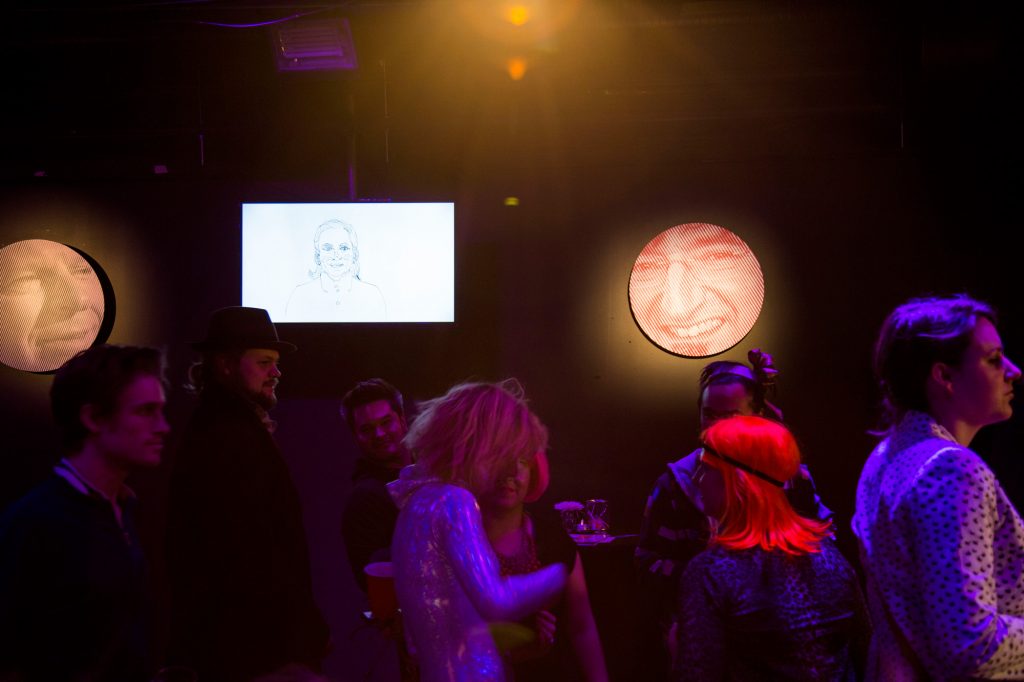
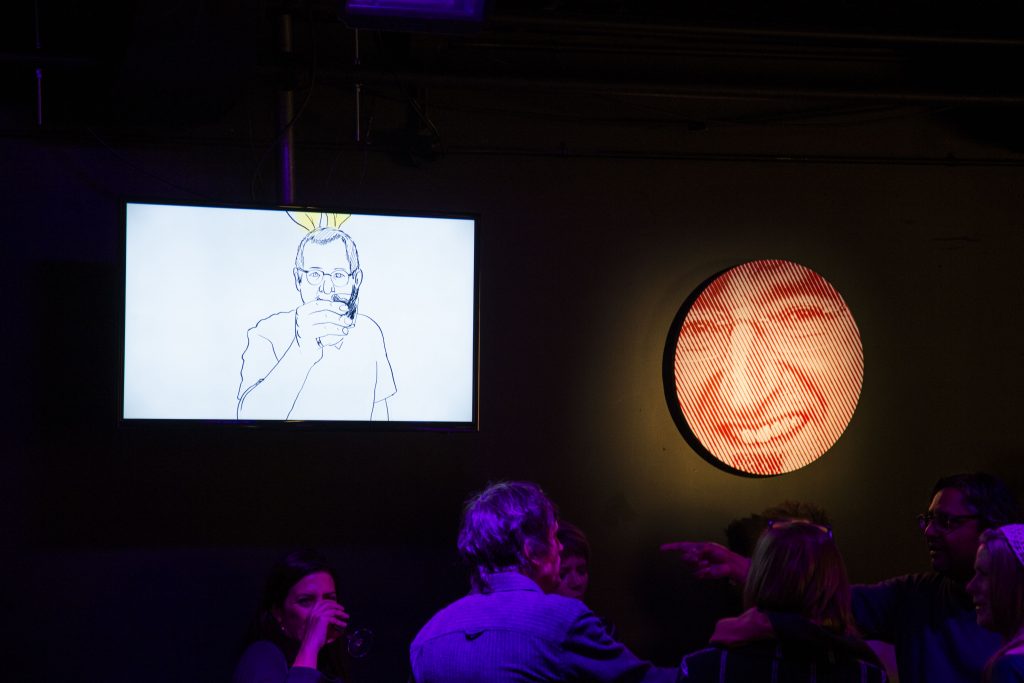
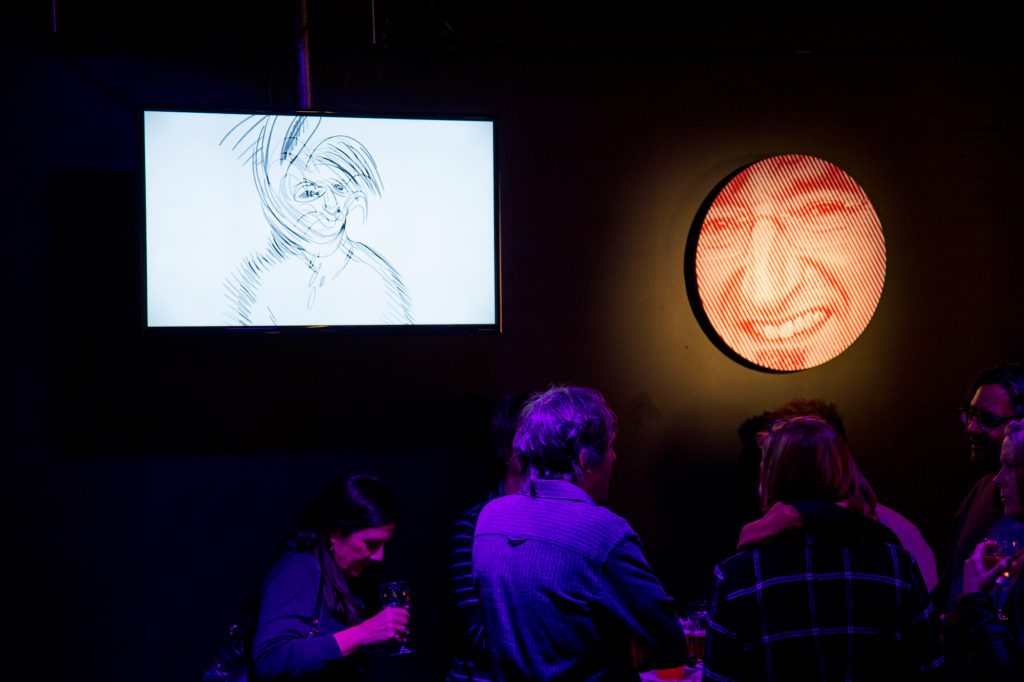
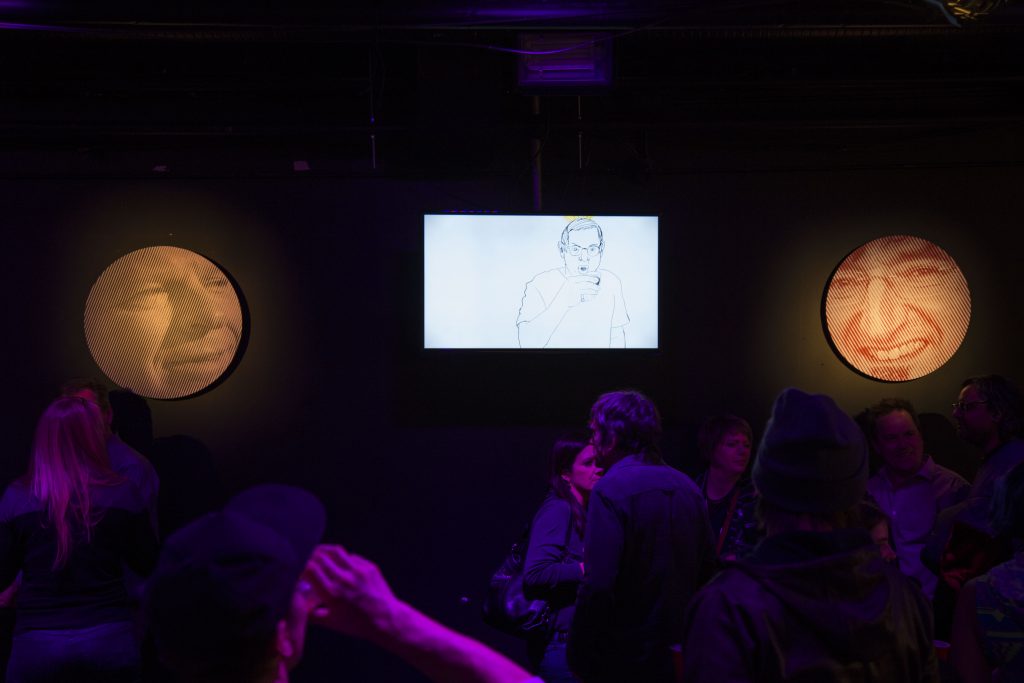
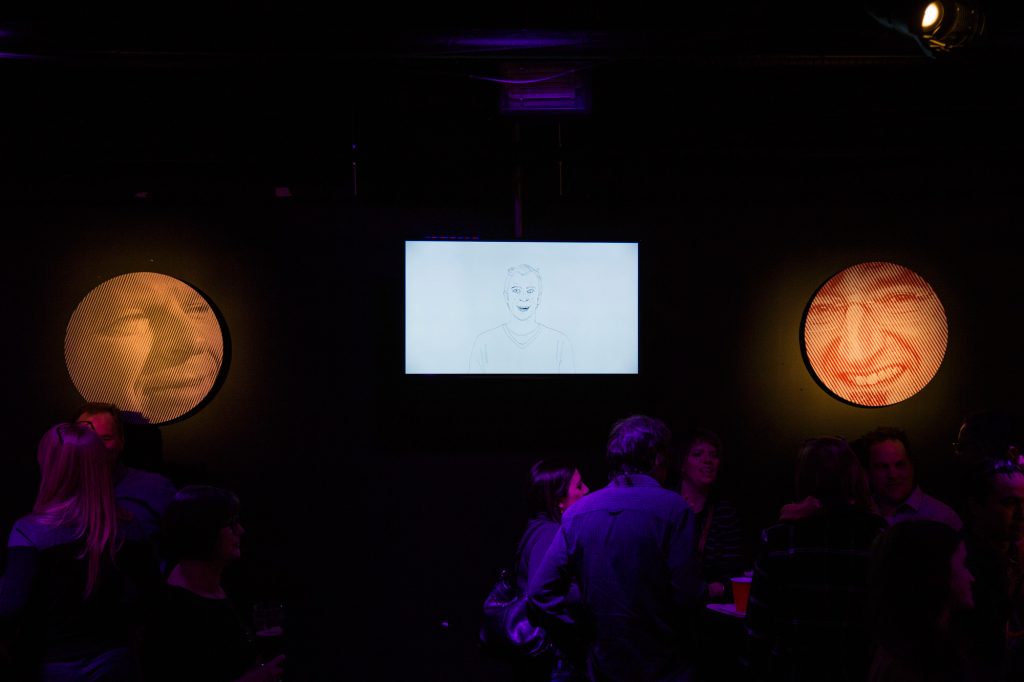
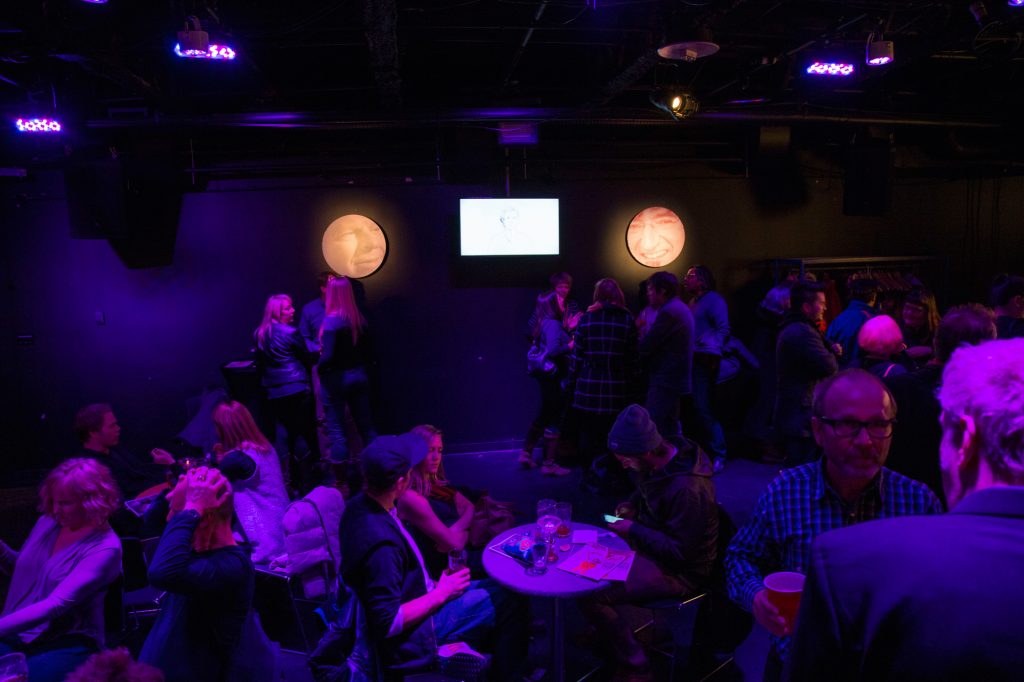
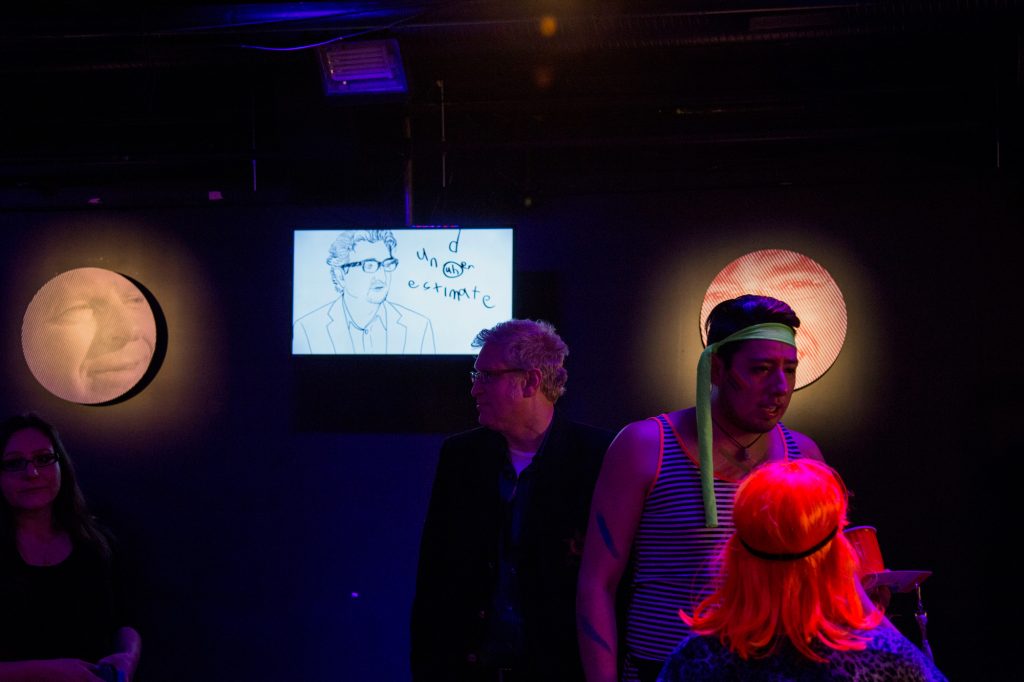
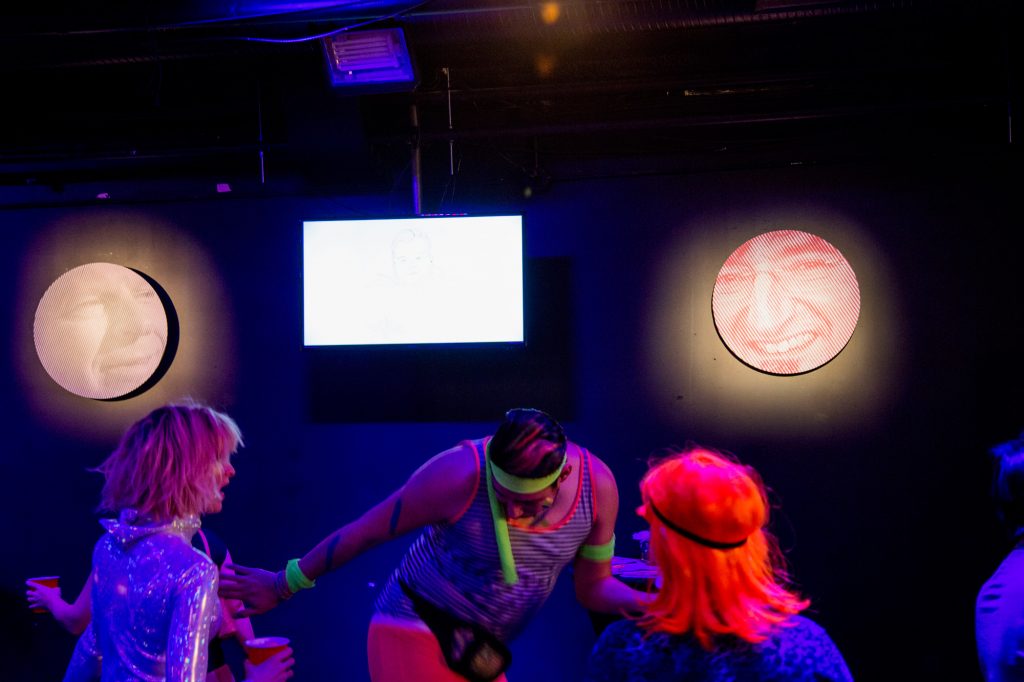
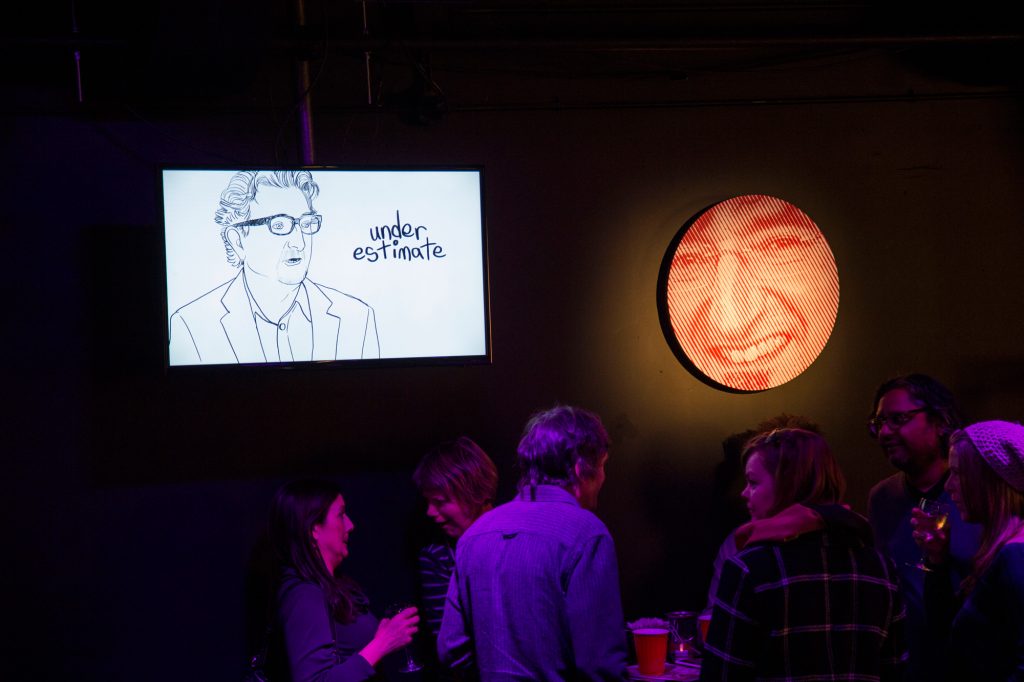
Last night I took the thing down. The Rodeo is over for another year! I feel incredibly grateful for the opportunity. I am playing around in this weird middle area between performance and video; this installation leans more heavily towards video. I think Renderrabbits is a performance, “live” in a sense even if it is pre-recorded; it is my hand, my drawings that are performing, and the only way to perceive that performance is through the mechanisms of video and film. Animations only really exist when they are being watched – just like theatre. They never “existed” in the first place. This version of the film is a one-month only performance, the film will change and grow in subsequent shows.
I will be locking it down into a film-film this spring. I have a couple other segments I want to include – I want to have 2 portraits of each rabbit, so I want to do another portrait of Denise, Andy, and Blake, and another one of Rico if I can find some decent footage to use. I kind of want to include more archival footage, but: I have a time limit. I got some production support from the National Film Board of Canada to work with Kenna Burima as a sound designer – but I have to get it finished by May! So I gotta get choosy again about what to spend my limited drawing time on…
Anyway, that’s it for this post! Next time I’ll talk about turning it into a film proper, and working with Kenna to develop the music. Thank you for reading!

